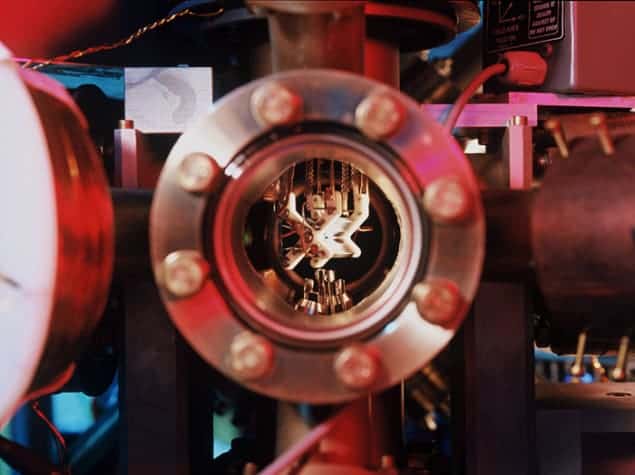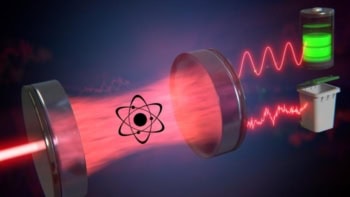
For the tiny units of quantum information known as qubits, teamwork pays off. So say researchers based in Austria and Spain, who have stitched together a record seven qubits in a way that enables detection of errors in any of the individual qubits.
Qubits, like the classical bits in today’s computers, have two possible states – up or down, for example. Unlike classical bits, however, qubits can also be in a superposition of both up and down simultaneously. Individual qubits can then be quantum-mechanically entangled with one another, such that they share a single superposed state. Using these capabilities, quantum computers promise to someday perform ultrafast computations to quickly solve certain problems, such as factoring large numbers and searching huge databases.
Fragile states
But quantum-computer developers must first overcome a major challenge: quantum states are fragile and easily shattered by interactions with the environment. These interactions lead to errors, such as a physical qubit flipping its state or becoming out of phase with its neighbours. Therefore, to preserve quantum states long enough to perform useful algorithms, scientists need to join physical qubits into information-processing units called “logical qubits” that can detect and correct errors in their individual components. Researchers have entangled up to five qubits in ways that allowed detection of bit-flip and phase-flip errors separately, but nobody has demonstrated a scheme that can detect both kinds of errors at once. For a fully error-correcting logical qubit, theory predicts that at least seven entangled physical qubits are needed.
Seeking to make such a logical qubit, the research team, led by Rainer Blatt of the University of Innsbruck in Austria, confined seven calcium ions in a trap with electric fields. The ions were lined up like beads on a string and were cooled to near absolute zero. At this temperature, two of the ions’ electronic energy levels can function as qubit states. The scientists then entangled the qubits and created errors by flipping the state, the phase or both the state and phase of one qubit at a time using lasers. Because of how the qubits were entangled, the researchers could tell which qubit had an error and what kind of error it was by measuring light fluorescing from the trapped ions.
It’s alive!
To actually correct errors, the team will need to incorporate into its set-up at least one additional qubit to “read out” errors occurring in the other qubits. To scale up towards a working quantum computer, scientists will also need to develop methods of trapping ions not just in lines but in 2D grids. These steps, while challenging, are “definitely on the agenda”, says Blatt. He says his team’s achievement is “the first decisive step…towards what I call keeping a qubit alive”.
Blatt’s team also performed computational operations on its logical qubit by using lasers to change the states of individual qubits in a controlled way. The researchers showed that they could reliably perform most operations without destroying the qubits’ delicate entangled superpositions. By adding additional qubits to their scheme, the scientists think they can perform all of the operations needed for quantum algorithms.
The achievement “is an interesting and important step” towards a working quantum computer, says John Martinis, a physicist at the University of California, Santa Barbara, who was not involved in the work. He points out that the new study confirms theoretical predictions of how quantum error correction should work. “People expected it to be correct, but it’s really nice to have them directly demonstrate that.” He also applauds Blatt’s team for creating the first logical qubit from seven physical qubits. In April Martinis’s team reported entangling five superconducting qubits and performing nearly error-free operations on them. His team is now working on a similar experiment with more qubits. “We obviously have to catch up now,” he says.
The research is published in Science.



